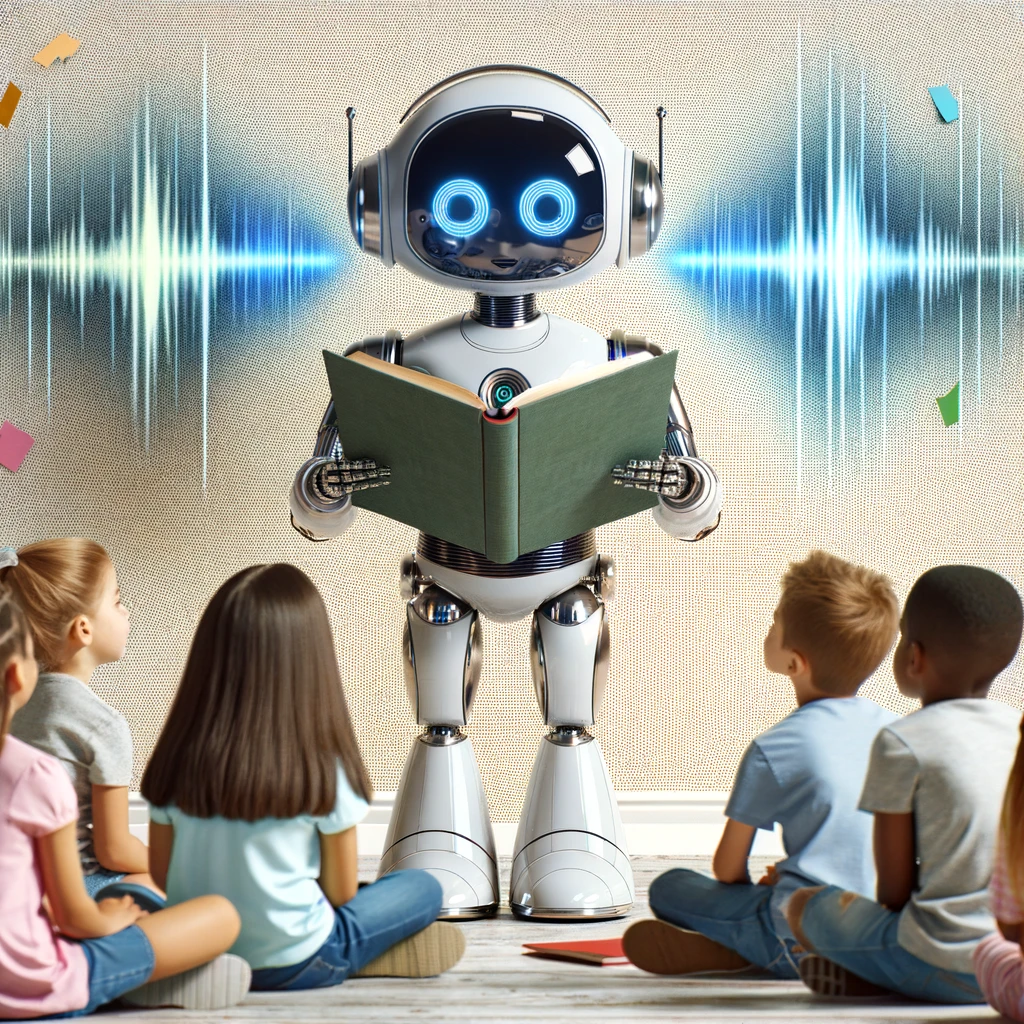Have you ever wondered how your smartphone reads texts aloud or how virtual assistants respond to your questions? Welcome to the world of text-to-speech (TTS) technology, a dynamic field that converts written text into spoken words.
What is Text to Speech
Text-to-speech technology combines sophisticated software that predicts text pronunciation with a vocoder that produces the voice sounds we hear. Delving into the science behind text-to-speech tools, it merges linguistics, audio signal processing, and advanced artificial intelligence, including deep learning, to mimic human speech with increasing naturalness and realism.
These technologies help the system understand natural language nuances, convert sounds into digital signals, and refine speech output using large data sets. As TTS technology becomes integrated into everyday devices like smartphones and smart speakers, it plays a pivotal role in the emerging ‘Internet of Voice.’
This technology’s evolution is significantly enhancing how we interact with digital content across various sectors. Join me in exploring how Text-to-speech benefits and transforms our digital interactions.
Text To Speech Developments Over the Years
The history of text-to-speech (TTS) technology traces back to the 18th and 19th centuries with early mechanical devices designed to emulate human speech. However, significant advancements occurred in the late 20th century. The milestone development by Bell Labs in 1961, the “vocoder,” marked the beginning of digital speech synthesis, famously synthesizing the song “Daisy Bell.” Progress accelerated in the 1970s with techniques like concatenative synthesis, enhancing naturalness in systems like the Kurzweil Reading Machine. By the 1980s and 1990s, TTS evolved with more versatile voice options and improved speech quality, culminating in technologies like Microsoft’s Narrator.
The advent of mobile technology in the 2000s, particularly with smartphones like the iPhone, expanded TTS applications significantly. The 2010s brought artificial intelligence into the fold, refining speech generation to produce more natural and accurate outputs, exemplified by Google’s Text-to-Speech API. Today, TTS technology is integral in various applications, continually enhanced by AI, promising even more sophisticated future developments.
How Does Text-to-Speech Work?
As explained above, Text-to-Speech (TTS) technology converts written text into spoken words. The process begins with text analysis, where the system processes and interprets the input text, including punctuation, abbreviations, and context. This step is critical for understanding the structure and meaning of the text.
Technical Process behind Text to Speech Conversion
- Text Analysis: The system analyzes the text, breaking it into phonetic and linguistic components. This involves tokenization, part-of-speech tagging, and syntactic parsing.
- Linguistic Processing: The system converts text into phonetic transcriptions using pronunciation rules and lexicons. Prosodic features such as intonation, stress, and rhythm are also determined.
- Sound Generation: The final step involves generating the audio waveform that corresponds to the phonetic and prosodic information.
Methods of Text to Speech generation
- Concatenative TTS: This method uses recorded speech segments (phones, diphones, or syllables) stored in a database. These segments are concatenated to form complete utterances. It ensures natural-sounding speech but can be limited by the variability and size of the database.
- Parametric TTS: This approach generates speech using mathematical models to simulate the human vocal tract. It provides more flexibility and a smaller footprint but often sounds less natural than concatenative methods.
- Neural TTS: Leveraging deep learning, neural TTS models, such as WaveNet and Tacotron, produce highly natural and intelligible speech by learning patterns from large datasets of recorded speech. This method offers the best quality but requires significant computational resources.
Role of NLP in Text-to-Speech
Natural Language Processing (NLP) plays a crucial role in TTS by enabling the system to understand and process human language. NLP techniques are used in text analysis to interpret context, resolve ambiguities, and apply appropriate pronunciation and prosody rules. Advanced NLP ensures that the generated speech is not only accurate but also natural and expressive.
Thus, TTS technology transforms text into speech through a complex process involving text analysis, linguistic processing, and sound generation, utilizing various methods such as concatenative, parametric, and neural TTS, with NLP playing a critical role throughout.
Interesting Read: Twitch Text-to-Speech Guide
Unique Applications of Text-to-Speech Technology
Text-to-speech (TTS) technology is transforming interactions across various sectors with innovative applications that enhance user experience and accessibility.
Art and Creative Media
- WaveNet by Google DeepMind: WaveNet by Google DeepMind generates realistic and expressive speech patterns. It is often used in interactive art installations and creative media projects to produce varied voice outputs based on audience interactions.
- Amazon Polly: Amazon Polly turns text into lifelike speech, which can be employed in storytelling apps to provide dynamic voice changes, enhancing the narrative experience.
Virtual Reality and Gaming
- Voicery: Voicery generates synthetic, natural-sounding voices that can be used in VR and gaming environments to create adaptive dialogues that respond to player choices.
- IBM Watson Text to Speech: IBM Watson Text to Speech Offers TTS services that can be integrated into virtual training simulations for emergency responders, providing realistic interactions through varied vocal responses.
Marketing and Branding
- ReadSpeaker: Readspeaker’s TTS technology is utilized by brands to create a unique voice for customer communications on various digital platforms, ensuring consistency in brand voice.
- Nuance Communications: Nuance Communications Offers advanced TTS solutions that power automated customer service and support systems, enhancing interaction quality with natural-sounding voices.
Accessibility and Assistive Technologies:
- Google Text-to-Speech: Google Text-to-Speech helps in creating applications for visually impaired users that convert text displayed on screens into spoken words, improving accessibility.
- Microsoft Azure TTS: Microsoft Azure TTS integrates with educational tools to provide customizable speech capabilities. By adjusting speech pace and tone, it aids students with learning disabilities.
Healthcare:
- Acapela Group: Acapela Group’s TTS technology is used in medical devices to articulate complex medication instructions and usage guidelines specially designed for the elderly.
- CereProc: CereProc is known for creating distinctive TTS voices that can be used in hospitals to communicate alerts and patient information efficiently, easing the workload of healthcare staff.
Apart from the above text-to-speech tools relevant to specific industries, explore our list of 10 best text-to-speech tools relevant for all use cases.
Wavel AI: Text-to-Speech Software for Diverse Use Cases
Wavel AI offers a robust text-to-speech (TTS) solution designed to simplify the process of creating high-quality voiceovers for various applications. The platform supports over 70 languages and features more than 250 unique voices, allowing users to generate natural-sounding speech that can convey a range of emotions and tones. Wavel AI’s TTS technology is particularly useful for video dubbing, voice cloning, and creating multilingual audio content, making it a versatile tool for businesses and content creators aiming to reach a global audience.
How Wavel AI’s Text-to-Speech Tool Works
Using Wavel AI’s TTS feature is straightforward:
- Sign Up or Log In: Start by creating an account on Wavel AI or logging into your existing account.
- Select Text-to-Speech: Navigate to the TTS section from the dashboard.
- Input Text: Enter the text you want to convert into speech. The platform allows you to paste text or upload documents directly.
- Choose Voice and Language: Select from over 250 voices in over 70 languages. You can also choose the desired emotion and tone for the voiceover.
- Generate Speech: Click the generate button to create the speech. Wavel AI processes the text and produces high-quality audio in seconds.
- Preview and Edit: Listen to the generated speech and make any necessary adjustments. The platform offers tools to fine-tune the pronunciation, speed, and pitch.
- Download and Use: Once satisfied, download the audio file for use in your projects.
Wavel AI’s TTS feature integrates seamlessly with its other offerings, like video dubbing and subtitle generation, providing a comprehensive suite for multimedia content creation. The platform’s user-friendly interface and advanced customization options ensure that even users without prior experience can effortlessly produce professional-quality voiceovers.
Wavel AI empowers users to enhance their multimedia projects with lifelike voiceovers, making text-to-speech conversion accessible and efficient. Its extensive language and voice options cater to diverse needs, ensuring that content can be tailored to specific audiences worldwide.
Text To Speech Tools by Wavel AI
- Text-to-Speech (TTS)
- Text To Speech converts written text into natural-sounding speech.
- Supports over 70 languages and 250+ voices.
- Voice Cloning
- Voice Cloning replicates specific voices for personalized audio content.
- Useful for consistent branding.
- Dubbing
- Dubbing translates and dubs audio/ video content into multiple languages.
- Ensures high-quality, synchronized voiceovers.
- Subtitling
- Generates accurate subtitles for videos.
- Enhances accessibility and localization.
- Speech-to-Text
- Speech To Text transcribes spoken language into written text.
- Supports multiple languages for accurate transcription.
- Translation
- Translation is used to translate text and audio content into multiple languages.
- Ensures accurate and culturally relevant translations.
- Transcription
- Transcription converts audio recordings into text.
- Supports various formats for accurate documentation.
- Voice Changer
- Voice Changer alters the characteristics of a voice.
- Useful for creative projects and privacy.
- AI Voice Generator
- AI Voice Generator generates synthetic voices using AI technology.
- Offers customizable options for different applications.
- Voiceover
- Voiceover provides professional-quality voiceovers for various multimedia projects.
- Enhances videos, presentations, and more with high-quality narration.
Wavel AI text-to-speech Use Cases
- E-Learning: Enhances educational content with natural-sounding e-learning voiceovers and multilingual support.
- Marketing and Advertising: Creates engaging video ads and promotional videos with customized voiceovers.
- Customer Service: Uses voice cloning and TTS for consistent, high-quality automated responses.
- Podcasting: Generates realistic voiceovers for podcast episodes.
- Gaming: Provides character voices and narration in multiple languages.
- Corporate Training: Delivers multilingual training materials with accurate translations and voiceovers.
- Social Media: Creates captivating content for social media platforms with voice changers and AI-generated voices.
- Audiobooks: Converts written books into audio format with expressive narration.
- Film and TV: Dubs and translates films and shows into different languages for international audiences.
Wrap Up
Text-to-speech (TTS) technology has evolved from early mechanical devices to today’s sophisticated AI-driven systems. It is pivotal in making digital content accessible and enhancing user interaction across various sectors. Innovators like Wavel AI are at the forefront, simplifying the creation of lifelike voiceovers adaptable across languages and emotions, highlighting the technology’s potential to revolutionize how we interact with digital platforms.
Want to generate voiceover with AI-driven text-to-speech technology for free? Try out Wavel Studio now.

.webp)










